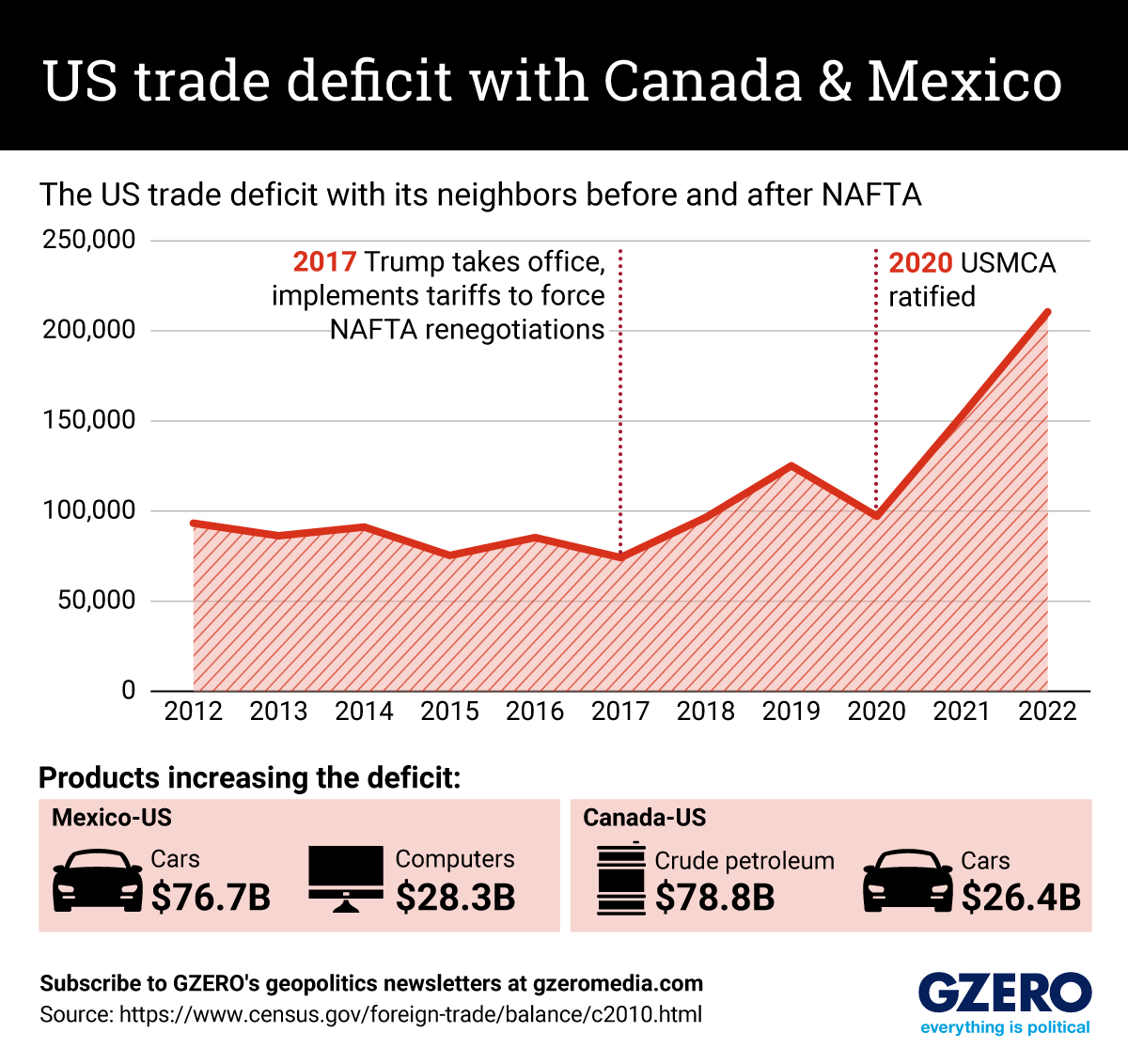June 15, 2023
In 2016, Donald Trump successfully mobilized his base around NAFTA being “the worst trade deal ever signed.” He argued that US industries were being suppressed by trade deficits with Canada and Mexico, and he promised to disband the agreement if elected.
Mexico was also under pressure for renegotiation. While NAFTA turbocharged Mexican agricultural and manufacturing sectors, many thought Mexico was too reliant on the US importing its products, putting its economy at the mercy of international food prices and exchange rates.
When Trump won the presidency, he kept his promise and called for the trade deal to be renegotiated. The promise he didn’t keep: lowering the trade deficit.
The law of the land now is the United States-Mexico-Canada Agreement, or USMCA, which still gives Canada and Mexico sweeping access to export products to the US. Trade deficits aren’t inherently negative as they help consumers benefit from cheaper goods, but domestic industries do struggle in the face of increased competition.
We look at how the US trade deficit with Mexico and Canada has grown since NAFTA was disbanded.
More For You
Most Popular
Fishing boats moored at Taganga Beach, as fishermen express concern over unclear US government videos showing strikes on vessels during anti-narcotics operations, amid fears that those targeted may have been fishermen rather than drug traffickers, in Santa Marta, Colombia, on October 20, 2025.
REUTERS/Tomas Diaz
Walmart’s $350 billion commitment to American manufacturing means two-thirds of the products we buy come straight from our backyard to yours. From New Jersey hot sauce to grills made in Tennessee, Walmart is stocking the shelves with products rooted in local communities. The impact? Over 750,000 American jobs - putting more people to work and keeping communities strong. Learn more here.
© 2025 GZERO Media. All Rights Reserved | A Eurasia Group media company.
